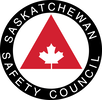The Saskatchewan Safety Council Confined Space Entry course discusses the hazards of a confined space including flammable and explosive atmospheres, oxygen-deficient atmospheres, and common ventilation problems.

Confined spaces are dangerous places. Many people are injured or killed each year by entering confined spaces when it is not safe to do so or they die making attempts to rescue someone in a confined space when it is not safe to do so.
Course Description:
The Saskatchewan Safety Council Confined Space Entry course discusses the hazards of a confined space including flammable and explosive atmospheres, oxygen-deficient atmospheres, and common ventilation problems.
It will also explain plans, procedures, and personal protective equipment. It covers the strategies to develop effective pre-entry plans, lock-out procedures, and tests of atmosphere and ventilation.
Topics Covered:
Legislation and responsibilities of employers, supervisors and employees
Hazards of a confined space including flammable and explosive atmospheres, oxygen deficient atmospheres, toxic atmospheres, bio-hazards, hydrocarbon gases, physical hazards, and common ventilation problems
Permits and gas test sheets
Plans, procedures and personal protective equipment including developing a pre-entry plan, lock out procedures, and testing atmospheres
Since 1955, the Saskatchewan Safety Council, a non-profit registered charity, has been dedicated to the prevention of injury in Saskatchewan at home, at play, and at work.
Funded through donations, membership contributions, sponsorship, and the distribution of safety programs and materials, the revenues generated by the Safety Council are invested within the province of Saskatchewan to further promote safety.
© 2025 coursetakers.com All Rights Reserved. Terms and Conditions of use | Privacy Policy